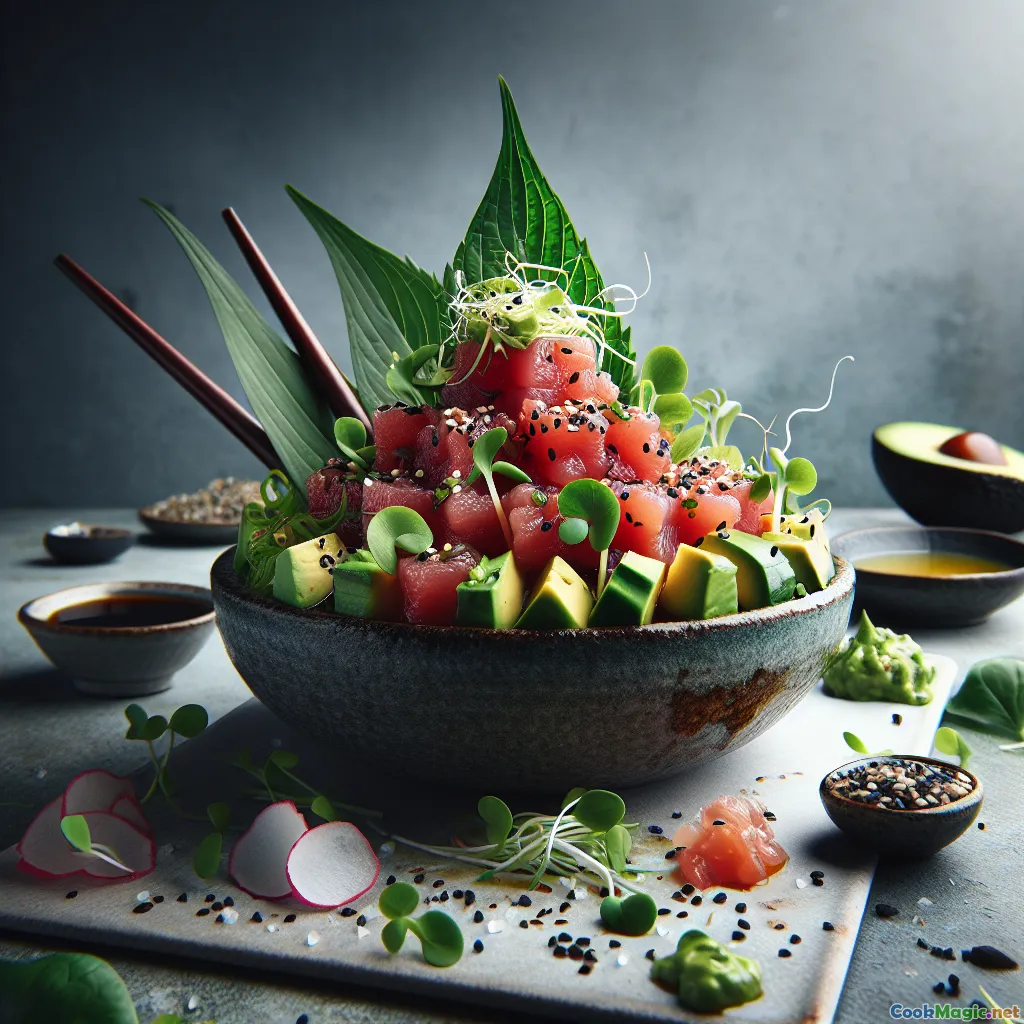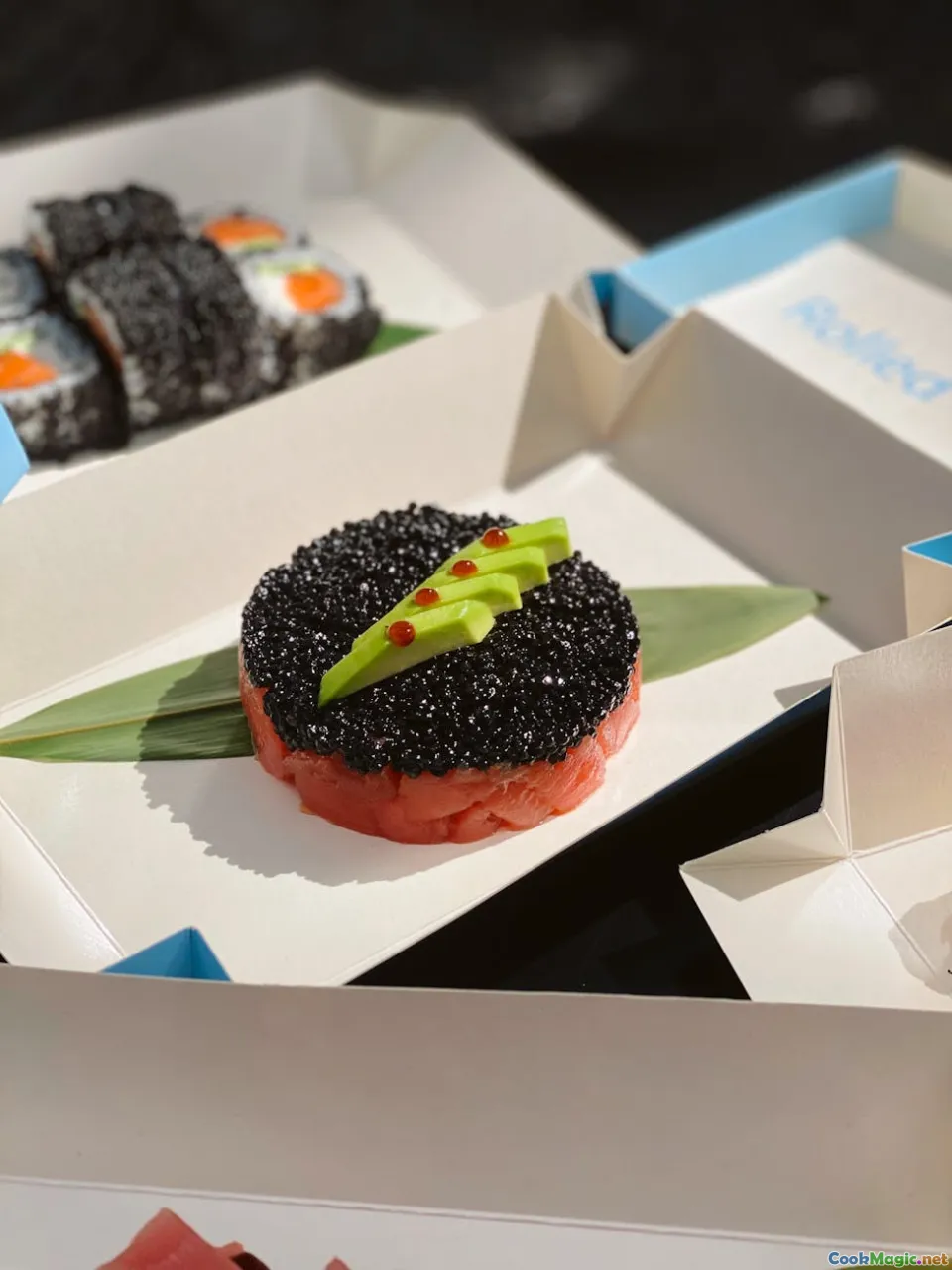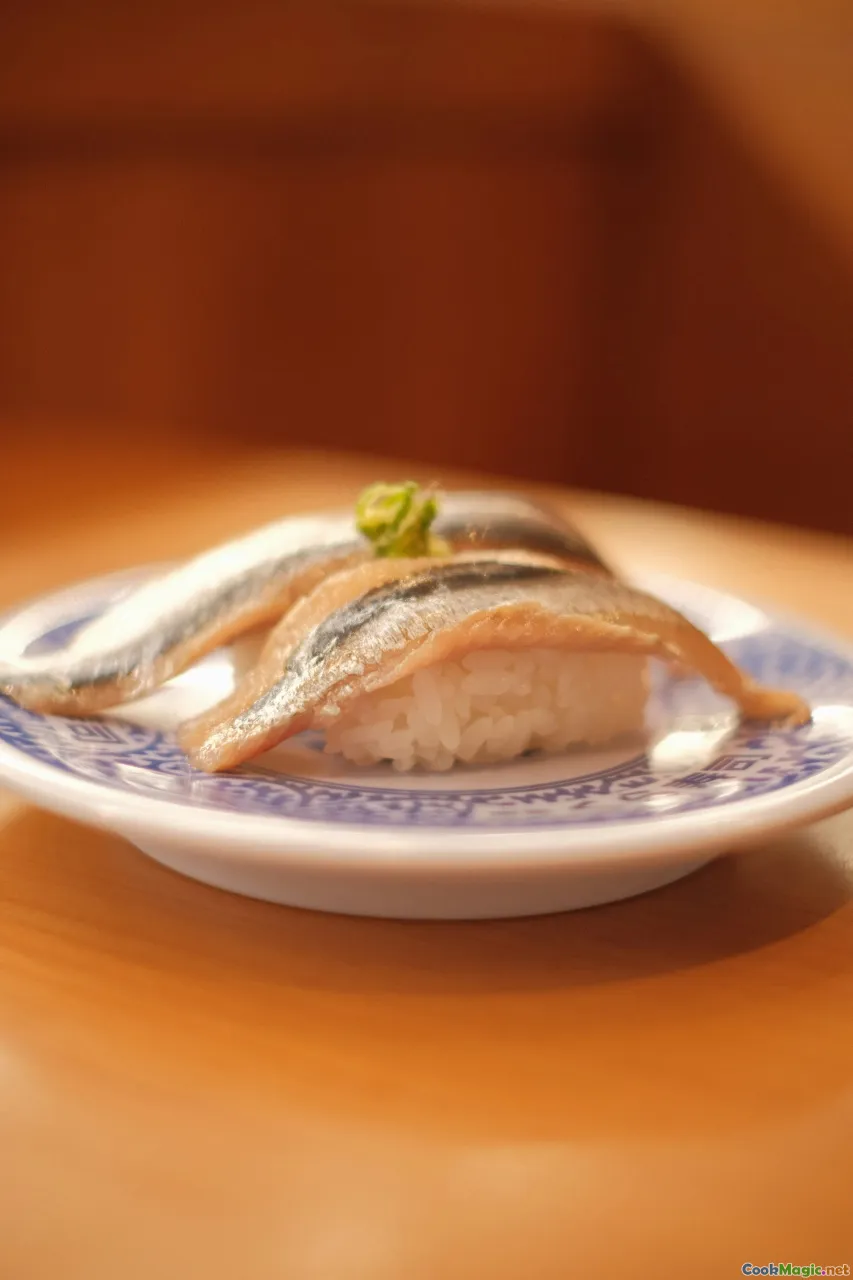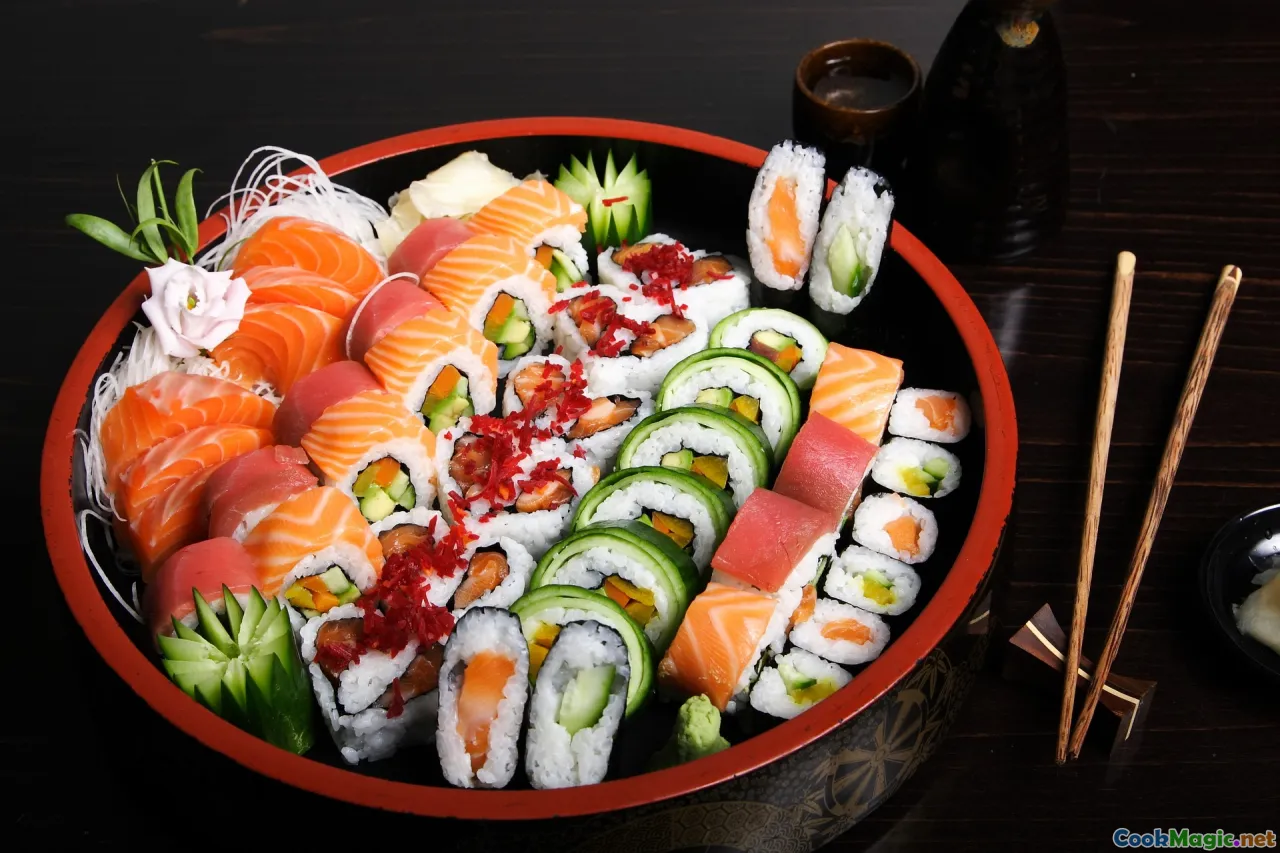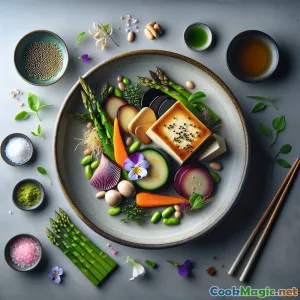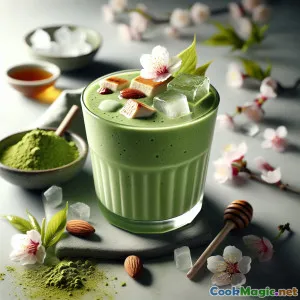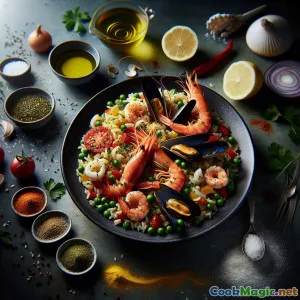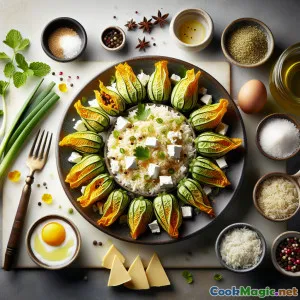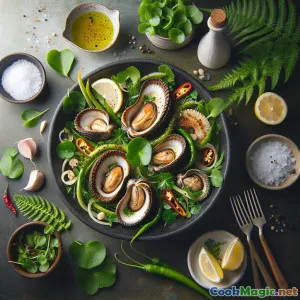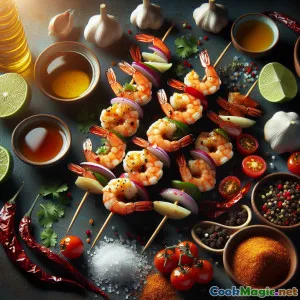
清新紫苏叶金枪鱼塔塔开胃菜
(Refreshing Shiso Leaf Tuna Tartare Appetizer)
(0 评论)食材
-
180 grams 寿司级金枪鱼大腿肉
(Very fresh, high-quality tuna is essential. Ask for sashimi or sushi grade.)
-
8 leaves 新鲜紫苏叶
(Green shiso preferred for its bright flavor)
-
1 stalk 葱
(Thinly sliced on the diagonal)
鳄梨, 0.5
-
1.5 tbsp 柚子酱油
(购买或自制)
-
1 tsp 芝麻油
(Adds nutty aroma)
青柠, 0.5
-
1 handful 绿芽或萝卜芽
(用于装饰)
-
1 tsp 烤芝麻
(For extra crunch)
-
1 pinch 海盐片
(Preferably Maldon or similar)
-
1 pinch 新鲜现磨黑胡椒
(Very fresh, high-quality tuna is essential. Ask for sashimi or sushi grade.)
(Green shiso preferred for its bright flavor)
(Thinly sliced on the diagonal)
(购买或自制)
(Adds nutty aroma)
(用于装饰)
(For extra crunch)
(Preferably Maldon or similar)
营养
- 份量: 2
- 每份大小: 1盘(150克)
- Calories: 240 kcal
- Carbohydrates: 0 g
- Protein: 26 g
- Fat: 11 g
- Fiber: 3 g
- Sugar: 1 g
- Sodium: 530 mg
- Cholesterol: 37 mg
- Calcium: 18 mg
- Iron: 1.8 mg
制作步骤
-
1 - Prep Ingredients:
Finely dice tuna loin into small cubes (approx. 0.5 cm). Rinse, then stack and finely chiffonade half the shiso leaves. Slice the scallion and dice the avocado.
-
2 - Make Marinade:
In a small bowl, whisk together ponzu sauce, sesame oil, fresh lime juice, and a tiny pinch of sea salt until well combined.
-
3 - Combine Tartare:
Place diced tuna, scallion, and most of the shiso chiffonade into a bowl; gently fold in avocado. Drizzle the marinade over, then mix gently to coat, taking care not to mash the avocado.
-
4 - Chill and Marinate Briefly:
Cover and refrigerate the tuna mixture for 5 minutes to let flavors meld, while prepping plates.
-
5 - Plate and Garnish:
Lay two shiso leaves on each plate. Gently spoon tartare on top. Garnish with microgreens or radish sprouts, remaining shredded shiso, toasted sesame seeds, a touch more sea salt, and cracked black pepper if using. Serve immediately.
Finely dice tuna loin into small cubes (approx. 0.5 cm). Rinse, then stack and finely chiffonade half the shiso leaves. Slice the scallion and dice the avocado.
In a small bowl, whisk together ponzu sauce, sesame oil, fresh lime juice, and a tiny pinch of sea salt until well combined.
Place diced tuna, scallion, and most of the shiso chiffonade into a bowl; gently fold in avocado. Drizzle the marinade over, then mix gently to coat, taking care not to mash the avocado.
Cover and refrigerate the tuna mixture for 5 minutes to let flavors meld, while prepping plates.
Lay two shiso leaves on each plate. Gently spoon tartare on top. Garnish with microgreens or radish sprouts, remaining shredded shiso, toasted sesame seeds, a touch more sea salt, and cracked black pepper if using. Serve immediately.
关于 清新紫苏叶金枪鱼塔塔开胃菜 :的更多信息
Shiso Leaf Tuna Tartare: A Modern Twist on Japanese Classics
Few dishes capture the delicate balance of freshness, elegance, and boldness like tuna tartare—which has found homes both in Japanese izakaya and chic international bistros alike. 'Shiso Leaf Tuna Tartare' is a refined appetizer that builds on sashimi roots, layering in the uniquely green, citrusy flavors of shiso leaf, the nutty undertones of sesame oil, and subtle tang of ponzu, all set atop the jewel brightness of ruby-red sushi-grade tuna.
The Inspiration
Tartare as a concept is French, often referencing hand-chopped beef united with bold dressings or resets. However, with tuna's firm texture and sweet flavor gaining popularity globally, Japanese and other fusion chefs began reinterpreting this style—combining traditional sashimi skills with western presentation and dressings.
The magic here lies in the ingredient synergy: Shiso, an aromatic herb in the mint family, reigns supreme in Japanese cuisine. Its slightly grassy, spicy, and citrus flavor is impossible to substitute, instantly brightening anything it touches—especially raw fish, which it both freshens and subtly protects due to its natural antimicrobial properties. Marrying it with luscious diced tuna creates a flavor profile rare outside of Japan.
History & Cultural Notes
Japan’s relationship with raw fish predates modern refrigeration: Sashimi, or thinly sliced raw seafood, is revered for its purity and respect for the fish. Offering such clean flavors, the use of raw tuna encapsulates a sense of trust both in the chef and the fisherman. Shiso leaves, typically seen as a garnish or sometime 'wrapping' agent for sushi, elevate the dish from eye-pleasing to mouthwatering, lending their herbaceous zing and striking color.
The Western influence comes mainly through the assembly; By dicing instead of sashimi slices and incorporating acidic ponzu and a hint of sesame, the dish appeals to both east and west palates. Ponzu adds brightness and unites everything in a umami-laden, lightly tangy cloak.
Unique Aspects & Tips
- Choose Premium Fish: The tuna must be top-grade and handled with care—cold, fresh, and never pre-frozen if possible. The success of every tartare (much like carpaccio or ceviche) relies on ingredient transparency. Never skimp on shiso, either; it’s increasingly available in Asian markets worldwide.
- Showcase Visuals: Stack or shape the tartare within a ring mold for elegant presentation atop the leaves, keeping texture defined. Surround or top with slender microgreens or edible flowers for dramatic color contrast.
- Handling: Gently folding the ingredients insures the avocado is distinct yet intact, the shiso remains identifiable, and the tuna remains velvety.
- Substitutions: While shiso is distinctive, if unavailable, try perilla or a blend of fresh basil and mint (though it won’t perfectly replicate the unique taste).
- Serving Suggestions: Wonderful with crisp white wines, dry sake, or as a part of omakase-inspired dinner parties. Add a side of crisp nori chips or wafer-thin rice crackers for texture.
- Food Safety Note: Always use absolutely fresh, sushi- or sashimi-grade fish, and keep chilled right up to serving.
Why This Appetizer Works
'Light and clean', yet simultaneously flavorful and decadent: The subtle avocado creaminess rounds out the brightness of lime and shiso, the rich meaty tuna gets punctuation from a hint of sesame and ponzu tartness. Jalapeño or chilies can be added for adventurous palates.
This fusion is what keeps this tartare so vibrant—rooted in tradition, dressed for the modern gazette. Each mouthful is cool yet hefty, aromatic yet never overpowering. I always find it a conversation starter, ideal for intimate gatherings or dinner parties where you want the dishes—all two or three bites of them—to impress on sight as well as taste.
Care for craft and subtle contrasts embodies Japanese cuisine, while innovation speaks for the hybridized global table. The shiso leaf not only serves as garnish or flavor enhancer, but as a tribute to Japanese philosophy: presenting beauty, healthfulness, and the pleasures found in simplicity elevated.
